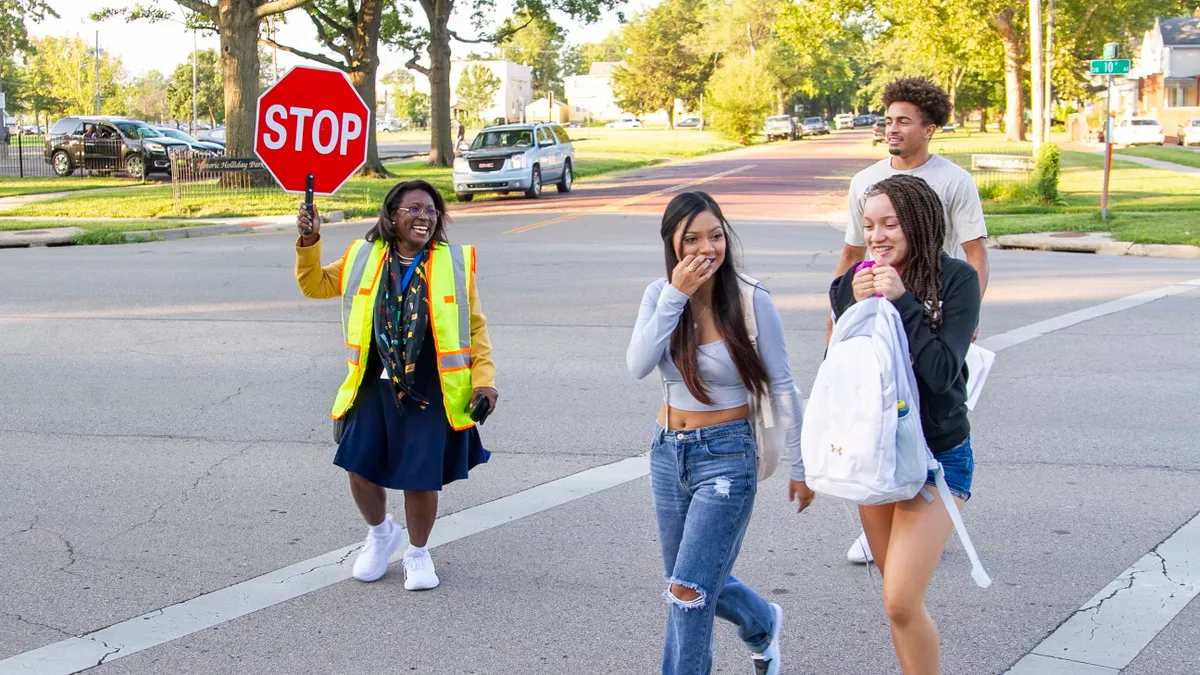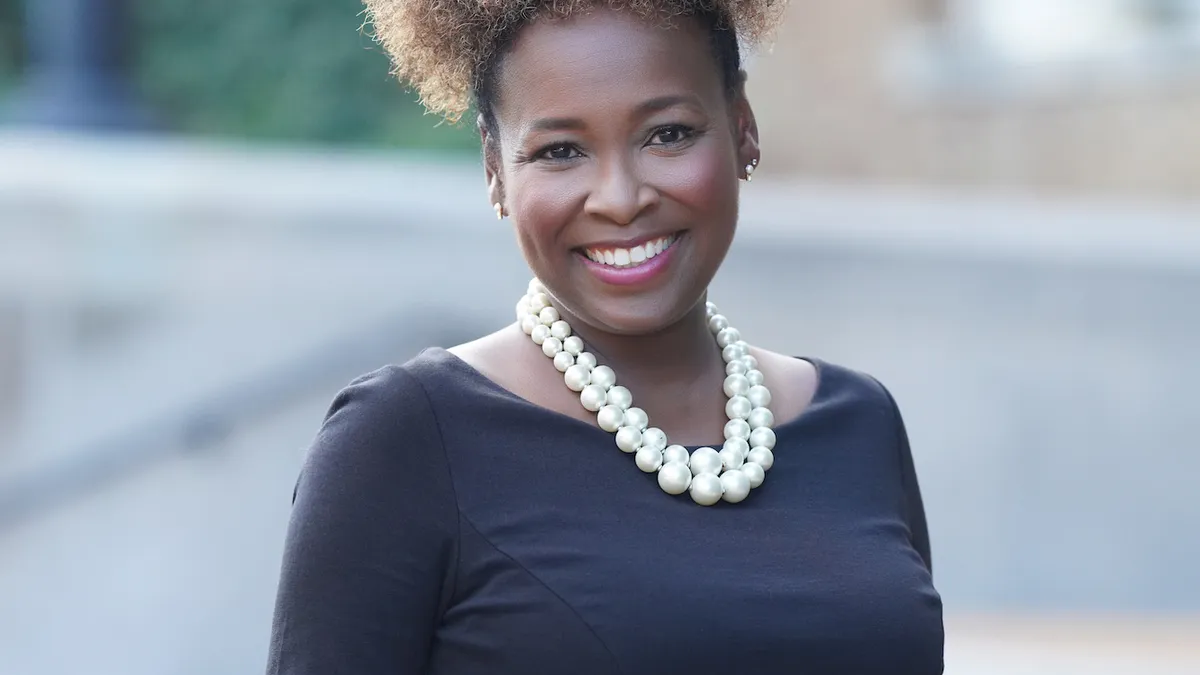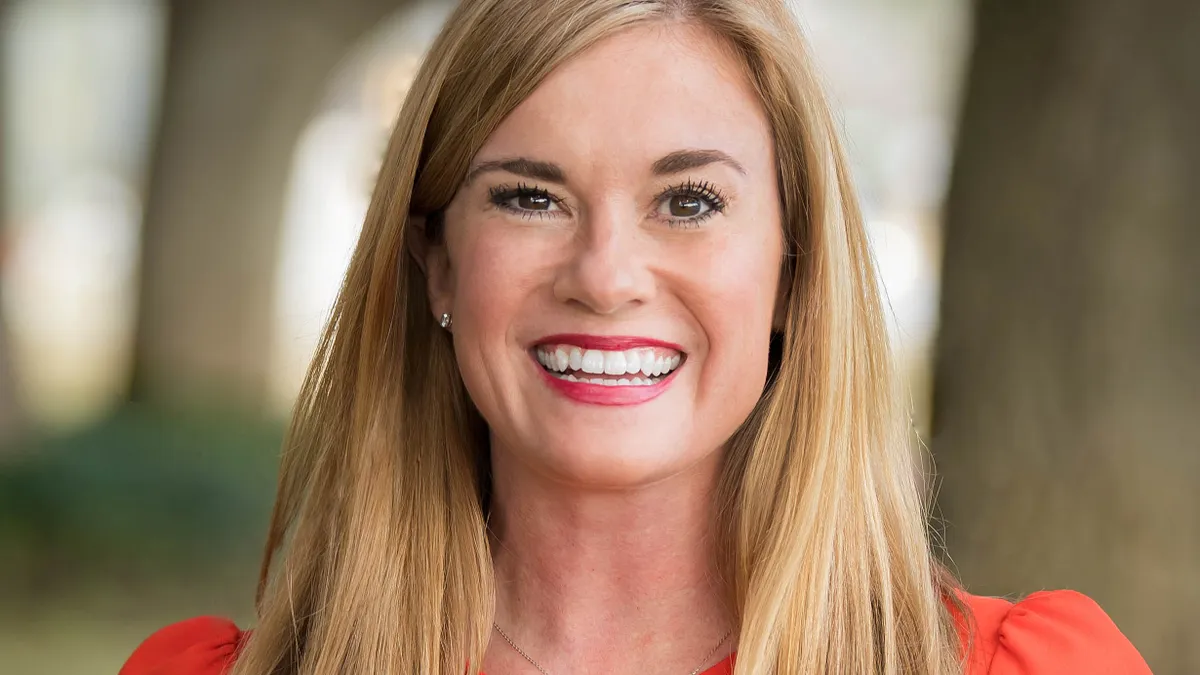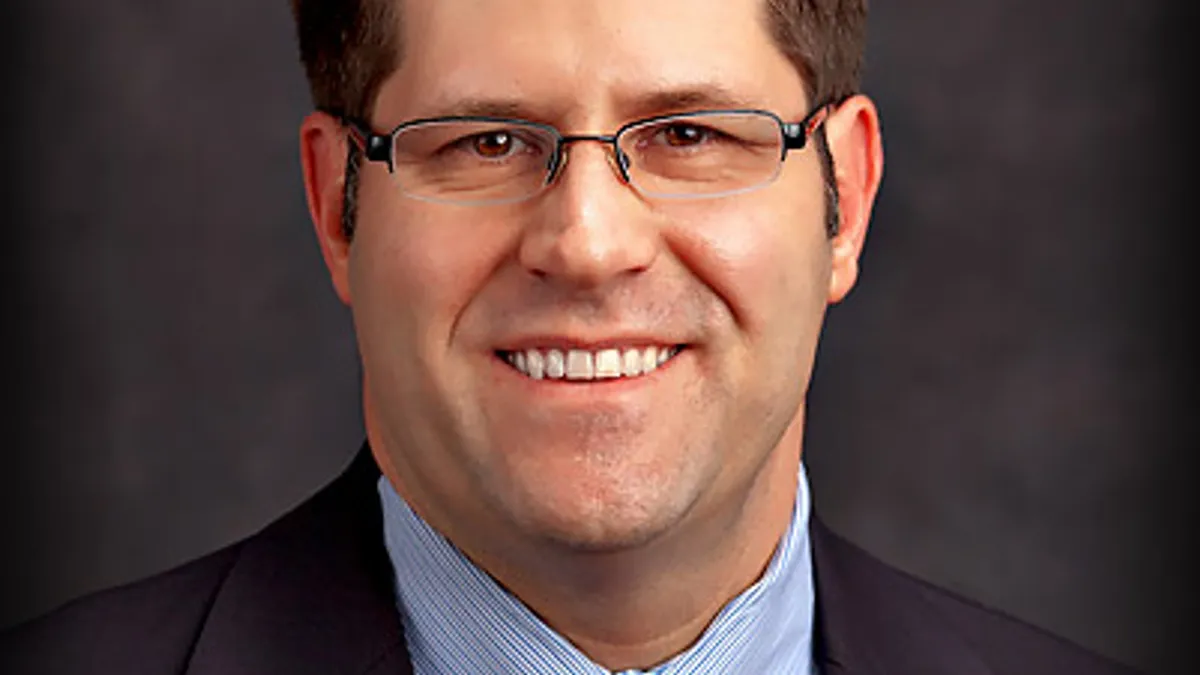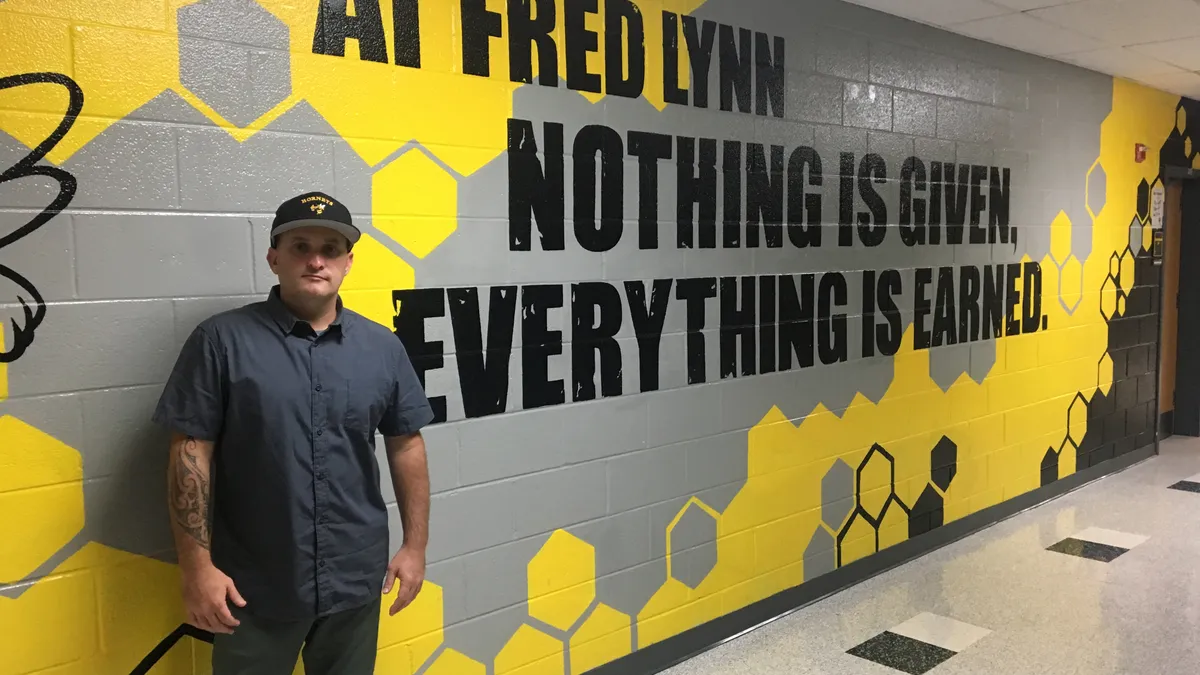Lessons In Leadership is an ongoing series in which K-12 principals and superintendents share their best practices and challenges overcome. For more installments, click here.
Jonathan Raymond (far left, above photo) had a career as an attorney and led a nonprofit before he entered education as a fellow with the Broad Superintendents Academy. After serving as chief accountability officer with the Charlotte-Mecklenburg Schools in North Carolina, he became superintendent of the Sacramento Unified School District in California in 2009 and now serves as president of the Stuart Foundation.
His tenure of more than four years in Sacramento included a focus on social-emotional learning, the development of a home-visiting model that is now spreading across the country, success at lowering the dropout rate, and, especially, his "priority schools initiative," a turnaround effort involving seven low-performing schools. While he clashed with the local teachers union over seniority issues at those schools, district-union collaboration is now one of the areas the Stuart Foundation is supporting.
In his new book, "Wildflowers: A School Superintendent's Challenge to America," he recounts many of those experiences and describes ways to bring a "whole child" approach to education.
EDUCATION DIVE: What message do you want current or aspiring superintendents to get from your book?
JONATHAN RAYMOND: The work of educating and developing children requires leadership to help create the conditions so both children and the adults supporting them can thrive. Three words help guide this effort — hope, belief and community. With hope, we inspire and energize others to be and lead the change we want to see. When we believe in children, and give them presence and voice, we inspire them to dream and reach beyond their current reality. When we engage community, we create the social safety nets and supports, so every child can reach their potential. Change is possible when we realize that education goes beyond the integration of head and hand. Change comes from the heart, and the road to excellence in public education lies at the crossroads of empathy and academic learning.
Imagine what might happen if we developed more empathy? That we start every public conversation about education with the traditional Maasai warrior greeting of “how are the children?” We then move to a recognition that they are all our children. As a community of educators, policymakers, community and civic leaders, parents and concerned citizens, we must put aside the “I’m right and you’re wrong,” “my way or the highway,” the either/or rhetoric, and realize that preparing our children to thrive in college, career and community requires a both/and approach. It’s only by working together and making education the priority it needs to be in terms of leadership, resources and attention that we can hope to achieve the answer to the traditional Maasai warrior greeting: “All the children are well.”
You talk about being asked to “take risks for kids.” What were some of the risks you took as superintendent and what did you learn from them?
RAYMOND: When we designed our plan to transform some of our neediest and most disadvantaged schools in the spring of 2010 — what later become our Superintendent’s Priority School Initiative — we were defying the reform movement which preached closing schools or converting them into charter schools. In the process, we shunned millions of state and federal school improvement grant dollars (not easy to do during the Great Recession). Instead, we opted to do it “our way” with our own principals and teachers. We relied upon proven pillars such as building and supporting collaborative teams of educators, building our teachers’ knowledge and inquiry skills around using data (particularly student work), and engaging and empowering parents and families, starting with home visits.
The teams of teachers and educators we assembled in these schools (first six and later seven) were outstanding. Their heart and commitment to educating our most disadvantaged children was unparalleled. What were we to do when the school district’s financial conditions required us to issue layoff notices, which in California, as well as many other states, are based on seniority (the last hired is the first to be let go)? Many of the teachers and staff we assembled in the priority schools lacked seniority. Losing them to layoffs was not an option.
There wasn’t a playbook or manual on what to do. During this time the words of my mentor, Tom Payzant, seemed so present: “The superintendency is knowing what to do when you don’t know.” So together with our legal team we found a rarely used provision in the California Education Code that enabled us to “skip” laying off these staff members. We were eventually sued by the local teachers union, but a superior court ruled in our favor. It was a risky and bold move that paid off for thousands of children.
What do you wish you would have done differently as a superintendent?
RAYMOND: With hindsight and reflection several things. First, despite two attempts, I never managed to get the right leadership in place in my human resources department. Hiring, retaining, and supporting the people part of this business is essential.
Second, I could have worked harder to build stronger relationships with our local teachers union leadership. It was certainly made more challenging given the fiscal pressures we were under (which necessitated layoffs), and some of the initiatives we pursued, such as the federal waiver to No Child Left Behind and its emphasis on using test scores to evaluate teachers.
Third, the process of closing schools for fiscal purposes is debilitating on so many levels and may not result in the “savings" being realized. Really taking time to consider redesigning/repurposing schools with the community before moving to the closure option needs to be the priority. We did this with one school (which involves another story!) and today this school is thriving as a public Waldorf school.
Finally, I wish we didn’t eliminate the cabinet position of Chief of Family and Community Engagement (the first of its kind in a major urban school district). This was done for both fiscal and political reasons given the school district’s precarious financial condition. Unfortunately, what went with this was a focus on creating welcoming schools through our School Quality and Community Review process.
You were not a career educator. What advice do you have for other district chiefs that come from “outside” the field?
RAYMOND: Yes, I took a different journey toward becoming an educator. Use those experiences and “fresh eyes” to ask different questions. For me it was “how is this good for kids?” You’ll be amazed at the looks you get from your colleagues.
The other advice is surround yourself with skilled leaders that have different skills and experiences. For example, my first chief of staff was a high school math teacher.
The proceeds from “Wildflowers” are going to support “whole child education.” Can you give some examples of programs or initiatives that fit this definition?
RAYMOND: All the work we are doing at the Stuart Foundation supports advancing “whole child education” through both direct grant-making and using our social capital (writing, speaking and hosting convenings). I’m particularly interested in seeing programs that involve student voice, such as the Making History project at the University of California, Berkeley and The Declaration Initiative, benefiting from these resources.
What other work are you doing at the Stuart Foundation that you’d like to share?
RAYMOND: We helped launch the California Labor Management Initiative in partnership with Stanford University, the California Teachers Association, the Association of California School Administrators and other foundations, such as the S.D. Bechtel Jr. Foundation. This effort supports school district teams comprised of management and labor in forging trusting relationships so they are able to work together and through the challenging issues that arise. To date, over 100 school district teams have participated.
















